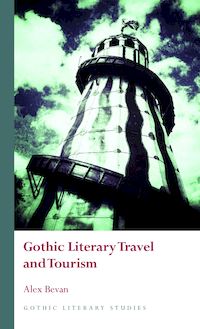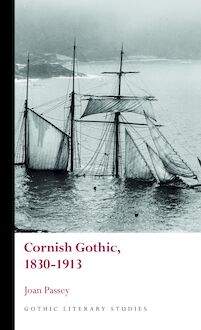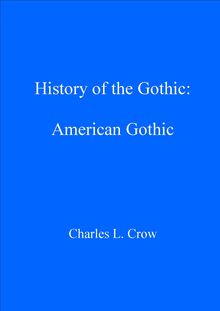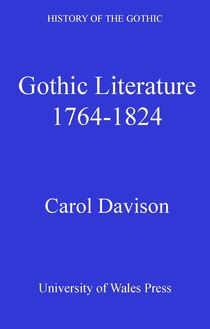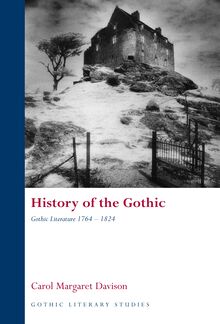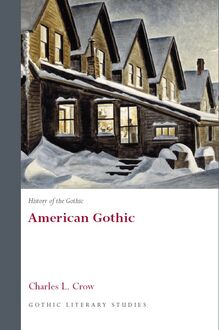-
 Univers
Univers
-
 Ebooks
Ebooks
-
 Livres audio
Livres audio
-
 Presse
Presse
-
 Podcasts
Podcasts
-
 BD
BD
-
 Documents
Documents
-
- Cours
- Révisions
- Ressources pédagogiques
- Sciences de l’éducation
- Manuels scolaires
- Langues
- Travaux de classe
- Annales de BEP
- Etudes supérieures
- Maternelle et primaire
- Fiches de lecture
- Orientation scolaire
- Méthodologie
- Corrigés de devoir
- Annales d’examens et concours
- Annales du bac
- Annales du brevet
- Rapports de stage
La lecture à portée de main
Vous pourrez modifier la taille du texte de cet ouvrage
Découvre YouScribe en t'inscrivant gratuitement
Je m'inscrisDécouvre YouScribe en t'inscrivant gratuitement
Je m'inscrisEn savoir plus
Vous pourrez modifier la taille du texte de cet ouvrage
En savoir plus

Description
A literary study of childhood in the American Gothic.
Childhood in Gothic literature has often served colonialist, white supremacist, and patriarchal ideologies, but in Uncanny Youth, Suzanne Manizza Roszak highlights hemispheric American writers who subvert these scripts. In the hands of authors ranging from Octavio Paz and Maryse Condé to N. Scott Momaday and Tracey Baptiste, Gothic conventions critique systems of power in the Americas. As fictional children confront shifting configurations of imperialism and patterns of gendered, anti-queer violence, their uncanny stories call on readers to reckon with intersecting forms of injustice.
Introduction
Chapter 1 – Haunted Perennial Girlhoods
Chapter 2 – Cursed Pregnancies and Uncanny Children
Chapter 3 – Gothic Boyhoods and Adult Betrayals
Chapter 4 – The Teen Girls Aren’t Alright
Chapter 5 – Writing Gothic Scenes for Young Readers
Conclusion – Resistance, Resilience, and the Gothic Happy Ending
Sujets
Informations
| Publié par | University of Wales Press |
| Date de parution | 15 mai 2022 |
| Nombre de lectures | 0 |
| EAN13 | 9781786838681 |
| Langue | English |
Informations légales : prix de location à la page 0,4400€. Cette information est donnée uniquement à titre indicatif conformément à la législation en vigueur.
Extrait
UNCANNY YOUTH
SERIES PREFACE
Gothic Literary Studies is dedicated to publishing groundbreaking scholarship on Gothic in literature and film. The Gothic, which has been subjected to a variety of critical and theoretical approaches, is a form which plays an important role in our understanding of literary, intellectual and cultural histories. The series seeks to promote challenging and innovative approaches to Gothic which question any aspect of the Gothic tradition or perceived critical orthodoxy. Volumes in the series explore how issues such as gender, religion, nation and sexuality have shaped our view of the Gothic tradition. Both academically rigorous and informed by the latest developments in critical theory, the series provides an important focus for scholarly developments in Gothic studies, literary studies, cultural studies and critical theory. The series will be of interest to students of all levels and to scholars and teachers of the Gothic and literary and cultural histories.
SERIES EDITORS
Andrew Smith, University of Sheffield
Benjamin F. Fisher, University of Mississippi
EDITORIAL BOARD
Kent Ljungquist, Worcester Polytechnic Institute Massachusetts
Richard Fusco, St Joseph’s University, Philadelphia
David Punter, University of Bristol
Chris Baldick, University of London
Angela Wright, University of Sheffield
Jerrold E. Hogle, University of Arizona
For all titles in the Gothic Literary Studies series visit www.uwp.co.uk
Uncanny Youth
Childhood, the Gothic, and the Literary Americas
Suzanne Manizza Roszak
© Suzanne Manizza Roszak, 2022
All rights reserved. No part of this book may be reproduced in any material form (including photocopying or storing it in any medium by electronic means and whether or not transiently or incidentally to some other use of this publication) without the written permission of the copyright owner except in accordance with the provisions of the Copyright, Designs and Patents Act. Applications for the copyright owner’s written permission to reproduce any part of this publication should be addressed to the University of Wales Press, University Registry, King Edward VII Avenue, Cardiff CF10 3NS.
www.uwp.co.uk
British Library Cataloguing-in-Publication Data A catalogue record for this book is available from the British Library.
ISBN 978-1-78683-866-7 eISBN 978-1-78683-868-1
The right of Suzanne Manizza Roszak to be identified as author of this work has been asserted in accordance with sections 77 and 79 of the Copyright, Designs and Patents Act 1988.
The publisher has no responsibility for the persistence or accuracy of URLs for any external or third-party internet websites referred to in this book, and does not guarantee that any content on such websites is, or will remain, accurate or appropriate.
C ONTENTS
Acknowledgements
Introduction
1 Haunted Perennial Girlhoods
2 Cursed Pregnancies and Uncanny Children
3 Gothic Boyhoods and Adult Betrayals
4 The Teen Girls Aren’t Alright
5 Writing Gothic Scenes for Young Readers
Conclusion: Resistance, Resilience, and the Gothic Happy Ending
Notes
Works Cited
A CKNOWLEDGEMENTS
I am so grateful to the many people who helped to ensure that Uncanny Youth would make it out into the world. In organizing our pedagogy panel at the 2019 International Gothic Association conference and in offering her invaluable feedback on my initial plan for this book, Bridget Marshall helped me to turn what was then a kernel of an idea into a full-fledged manuscript. Special thanks are due to Sarah Lewis from the University of Wales Press for connecting with me at that conference and for her unfailingly patient guidance during a manuscript submission process shadowed by the COVID-19 pandemic. I so appreciate the anonymous peer reviewers who commented on this project at various stages, offering insights that proved invaluable and generously volunteering their time under such stressful circumstances. I am also indebted to the editors of Modern Language Review and Contemporary Women’s Writing , Derek Connon and Holly Laird, whose feedback was instrumental in helping me to revise the articles that would become the first and second chapters of this book. And I am ever in awe of Katie Trumpener, once my dissertation adviser and still a treasured mentor, whose depth of generosity in helping a former student has continued to shape my writing and my identity as both a researcher and a teacher.
I finished drafting this manuscript in the months after my family’s move to the Netherlands, where I have joined the teaching staff at the University of Groningen. Without the help of my new colleagues and mentors here at the RUG, it would not have been possible for me to balance the writing and revision process with the work of getting established in a new country and the experience of teaching at a new university. I am especially grateful to Richard Lansdown for his always wise and witty leadership, to John Flood for being the most fantastic co-teacher and mentor I could have wished for, to Ann Hoag and Ashley Maher for their friendship and their tolerance of my many questions, and to David Ashford for so warmly welcoming a fellow poet and helping us all to feel at home. I am also thankful for my undergraduate and graduate students here at the RUG, whose own insightful readings of Gothic writers from Matthew Lewis to Tracey Baptiste have informed and enlivened this work.
As always, my most loving gratitude goes to my husband, Jonny; our toddler son, Sander; and my dear friends and collaborators, especially Dana Murphy, K. Adele Okoli, and Jessica Teague. An ocean may separate us, but your amazing work continues to inspire and energize me. Thank you.
Introduction
Stories of Gothic youth have long had a unique power, both within and far outside the world of children’s and young adult literature. From infancy to adolescence, young people faced with unthinkable horrors tend to exercise an affective pull on readers – so much so that the literary figure of the gothically maligned child has often served as a sort of tool for cultural propaganda, advancing colonialist, white supremacist, and patriarchal ideologies. Meanwhile, the imagined figure of the gothically monstrous child has turned out to have her own kind of persuasiveness within these oppressive systems, instrumentalized in attempts to justify the exercise of power over purportedly threatening bodies. It is no wonder that, amid this literary history, modern and contemporary Gothic literature by hemispheric American writers would refigure uncanny youth in forms that have inverted these cultural scripts, using both the horrific injuries done to child and adolescent characters and their own subversive, resistive forms of Gothic power to disrupt the othering impulses of the Euro-American Gothic canon – as well as to critique a whole range of pathological structures of power in the space of the Americas. This book takes up the stories of some of these literary voices, writers ranging from Octavio Paz and Maryse Condé to N. Scott Momaday and Carmen Maria Machado.
Of course, it is impossible to really talk about the modern and contemporary Gothic today without recognizing its complex and transnational constellation of origins, as the neat narrative of the Gothic’s start in Europe and its appropriation by a string of writers from colonized and formerly colonized places has increasingly given way to a much more complicated history. With the title of her essay ‘Is There an Indigenous Gothic?’, Michelle Burnham posed a question that invited readers not just to consider the point of reading contemporary Indigenous American literatures through a Gothic lens but also to re-examine the fiction that the original roots of the Gothic lie ‘firmly in eighteenth-century Britain’ and developed ‘in response to the European Enlightenment’ (2014, 225). Burnham’s answer and the answers of other readers who have asked similar questions have proven meaningful to our understanding of the Gothic within a broad range of multi-ethnic US, hemispheric American, and global literatures. In reaffirming the existence of both a modern and contemporary Indigenous Gothic tradition and a robust ‘indigenous prehistory of the Gothic’ (2014, 234), voices like Burnham’s have recast the project of Gothic reading in itself as a way of reclaiming the genre from Eurocentric ways of thinking. Meanwhile, working in the context of the Latin American Gothic, Sandra Casanova-Vizcaíno and Inés Ordiz have laboured to disrupt ‘the consideration of the Gothic as a colonizing discourse’ and the conceptualization of the genre as ‘a uniquely European mode’ incompatible with ‘representation[s] of Latin American reality free of outside (colonizing) influences’, suggesting that ‘a global perspective on literary history’ necessitates a different view (2018, 3–4). For Casanova-Vizcaíno and Ordiz, it is vital to consider that ‘responses to modernity similar to what the West has named Gothic have emerged elsewhere, even if differently modulated by other historical and cultural conditions’ (Byron 2012, 370). Such a perspective liberates us to recognize the actually anti-Eurocentric impulses of the Latin American Gothic – or, more broadly, the hemispheric American or even the global Gothic – and to understand these Gothic modes as having distinct lineages that reach beyond ‘the shadows of European and North American rationalism’, springing instead from their own contextually driven sets of sociopolitical and cultural concerns (Casanova-Vizcaíno and Ordiz 2018, 3).
These explorations build meaningfully on a robust tradition that has documented the politically important and necessary gothicism of texts by many of the writers in this book. Readers’ responses to novels like Jamaica Kincaid’s The Autobiography of My Mother or Elizabeth Nunez’s Prospero’s Daughter have shown us how, in their invocations of the Gothic, these writers have weaponized
-
 Univers
Univers
-
 Ebooks
Ebooks
-
 Livres audio
Livres audio
-
 Presse
Presse
-
 Podcasts
Podcasts
-
 BD
BD
-
 Documents
Documents
-
Jeunesse
-
Littérature
-
Ressources professionnelles
-
Santé et bien-être
-
Savoirs
-
Education
-
Loisirs et hobbies
-
Art, musique et cinéma
-
Actualité et débat de société
-
Jeunesse
-
Littérature
-
Ressources professionnelles
-
Santé et bien-être
-
Savoirs
-
Education
-
Loisirs et hobbies
-
Art, musique et cinéma
-
Actualité et débat de société
-
Actualités
-
Lifestyle
-
Presse jeunesse
-
Presse professionnelle
-
Pratique
-
Presse sportive
-
Presse internationale
-
Culture & Médias
-
Action et Aventures
-
Science-fiction et Fantasy
-
Société
-
Jeunesse
-
Littérature
-
Ressources professionnelles
-
Santé et bien-être
-
Savoirs
-
Education
-
Loisirs et hobbies
-
Art, musique et cinéma
-
Actualité et débat de société
- Cours
- Révisions
- Ressources pédagogiques
- Sciences de l’éducation
- Manuels scolaires
- Langues
- Travaux de classe
- Annales de BEP
- Etudes supérieures
- Maternelle et primaire
- Fiches de lecture
- Orientation scolaire
- Méthodologie
- Corrigés de devoir
- Annales d’examens et concours
- Annales du bac
- Annales du brevet
- Rapports de stage


